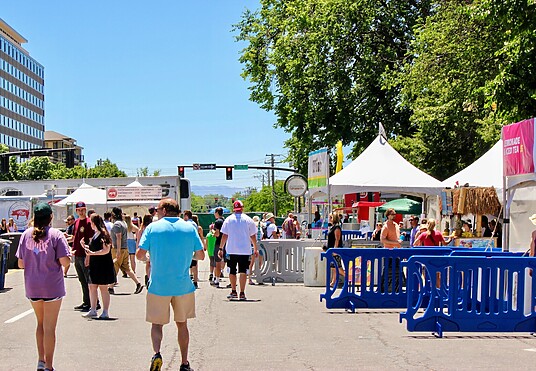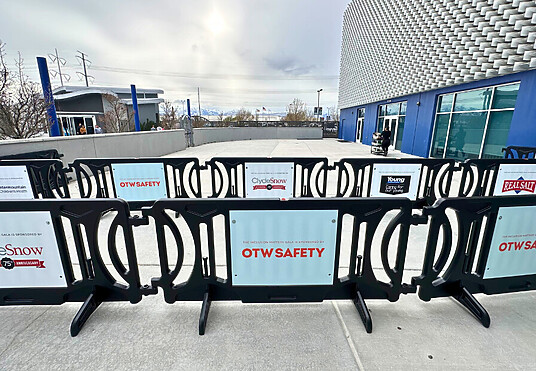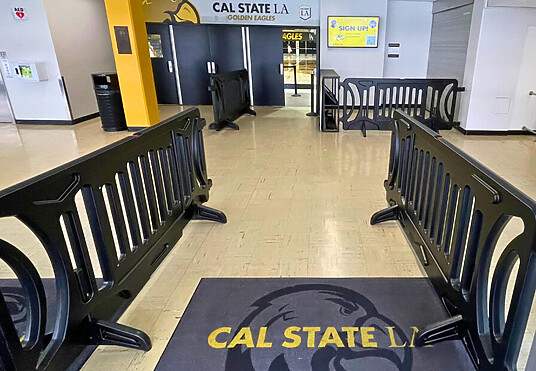Winter Workplace Safety: How to Stay Safe in the Cold
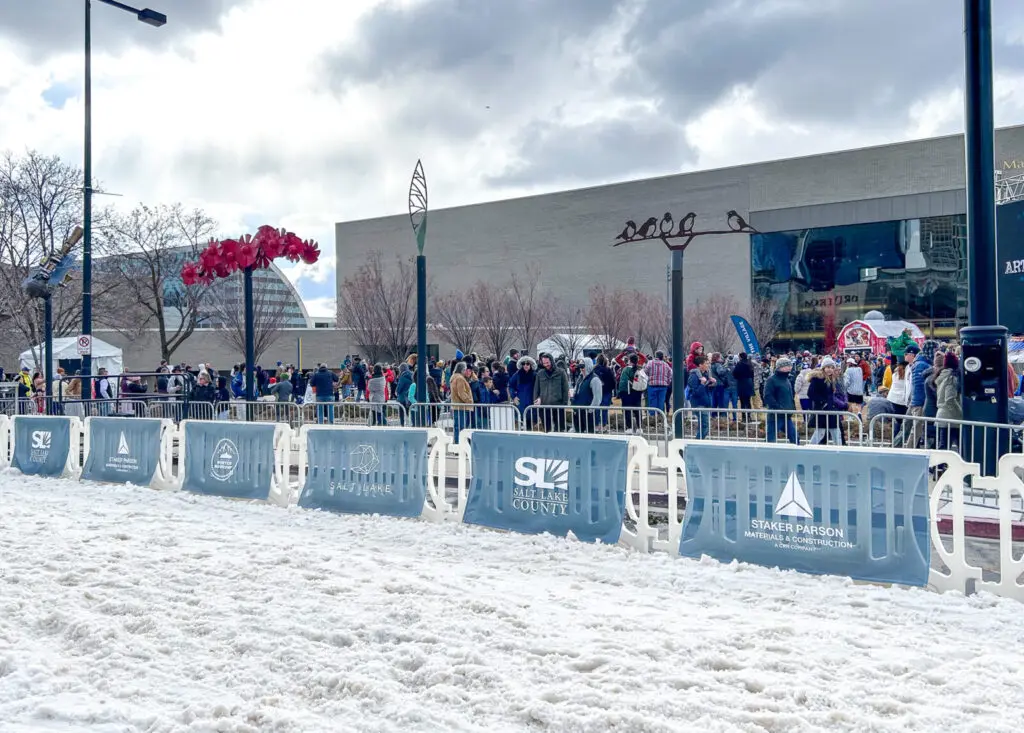
Brr! If you live in a climate like northern Utah, chances are good the temperatures (usually) get low during the winter. With this drop in temperature comes snow, sleet, and all sorts of precipitation that precipitate the need for increased safety measures to stay safe on the job.
Importance of Winter Safety
While a clear, snowy morning can be glorious, winter weather might leave much to be desired when it comes to staying safe on a job site. Snow and ice can delay progress or hinder heavy equipment, create slick, dangerous surfaces, and make cold temperatures even more unbearable. For individuals putting in a day’s work in the great outdoors during winter, this only increases the chance of injury or harm. Precautions and safety measures are necessary year-round, but they become even more important when the snow starts flying.
Cold Weather Hazards and Risks
Frigid temps can make even the hardiest of humans’ teeth chatter, and jobs that require a person to work outdoors daily can be tough on the body. While construction, in particular, is somewhat of a seasonal industry, there are enough jobs to go around year-round and individuals may find themselves working outside regularly. People who work outdoors in the wintertime may experience:
- Slick surfaces due to ice and snow
- Frostbite
- A loss of dexterity (making it difficult to use power tools or heavy equipment properly), decreasing productivity
- A loss of attentiveness (or alertness), increasing the chance of distraction and improper handling of job equipment, creating a higher risk of accidents
- An increase in danger outside of the site, such as out-of-control vehicles on slick roads.
Winter Safety Tips
To combat the dangers of cold weather, we’ve got some tips to increase safety while working outdoors during winter: at construction sites, roadside projects, and outdoor events.
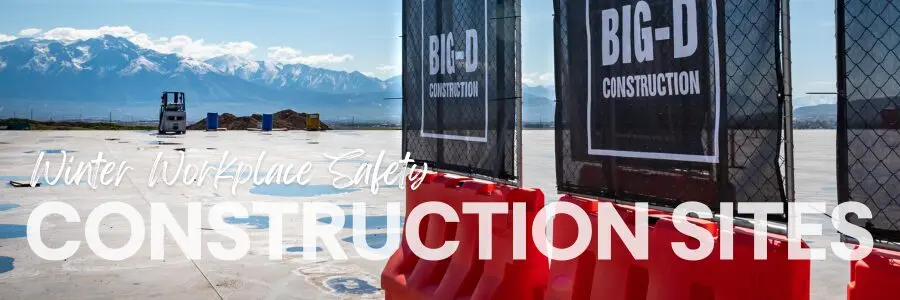
Construction Sites
Whether residential or commercial, chances are good you might be outside at some point during work at a construction site. Use these tips to keep your sites safer.
- Use barricades and signage to indicate slippery or frozen areas. These types of barriers (available from OTW Safety!) will help keep people aware of the hazards around them.
- Ensure hazard lights work automatically or on an updated timer, as the day darkens earlier. OTW Hazard Lights are the perfect addition to many of our barricades and their dawn-to-dusk function turns them on in dark conditions automatically.
- Use FOD-free construction materials! Foreign object debris is more of a risk in high-wind conditions, so always ensure that materials and safety equipment (like barricades) are FOD-free when possible (check out our low-profile airport barricade).
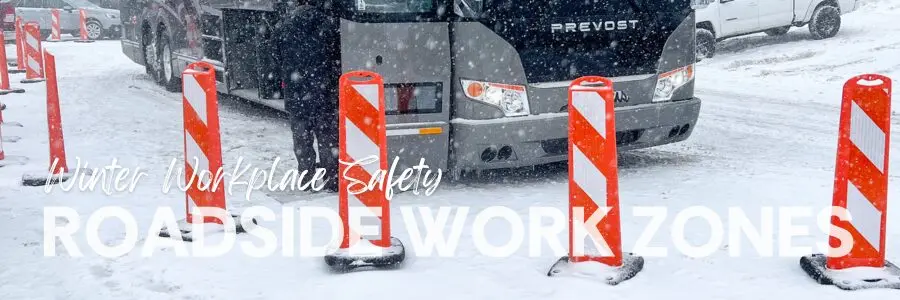
Roadside Work Zones
Work zone safety at roadside construction sites often takes higher levels of intentionality thanks to the dangers associated with working next to active highways. Driving through active work zones can also be dangerous, as lanes often become smaller, there is less space to react to hazards, and people are out working right next to the driving lanes. These tips for drivers can help keep both motorists and workers safer, while the tips for workers can help prepare crews for working in winter weather.
Tips for drivers
- Maintain more space between vehicles, as slippery roads necessitate longer stopping distances and faster response times.
- Use your headlights! If you’re having trouble seeing, others are having trouble seeing you. Turn on your headlights to help cut through wet, wintery weather and make things more visible.
- Be aware. One of the simplest, yet most impactful, ways to keep everyone around you safer is to drive aware. Paying attention to what’s on the road in front of you (and not your phone or something inside your vehicle) increases the chances that you’ll see work zones and potential hazards and navigate them safely.
Another big one: slow down! Active roadside work zones have reduced speed limits for a reason, and that is to keep the individuals working at them safe. Decreasing your speed through work zones also gives you more time to react if anything goes wrong.
Tips for workers/crew
- Dress warmly and in layers. A wicking layer (one that absorbs sweat and keeps you dry) is perfect for your base layer. Avoid cotton, as it traps moisture and can freeze. On top, layer fleece and/or wool layers as well as a waterproof jacket to stay extra toasty and dry.
- Check forecasts before heading to work. Hopefully, your employer does this as well to determine whether it’s going to be good enough weather to work in that day, but checking the forecast (and maybe poking your head outside before you get dressed) can help you decide what layers you’ll need and what precautions you’ll need to take at and en route to work.
- Inspect heavy equipment before use. Snow and ice can build up and prevent machines from working properly, so they should be checked before every work day begins. Other things to check are machinery, tools, work vehicles, and scaffolding or ladders.
- Survey the site before work begins and remove any hazards due to ice or snow. It’s possible snow removal would be performed by a different crew than those working, so snow and slippery ice should be removed or salted before the workday needs to begin.
- Ensure proper communication between workers and train on best practices for winter work. Employees should be able to identify cold hazards like frostbite or hypothermia, know how to operate heavy machinery in the snow, and know who to contact in case of an emergency on site.
- Use safety products or barricades with reflective sheeting so that work zones and hazards are more obvious in low-visibility areas. Lining sites with highly visible barricades can help alert pedestrians and motorists to the possibility of danger as they navigate around or through active work zones.
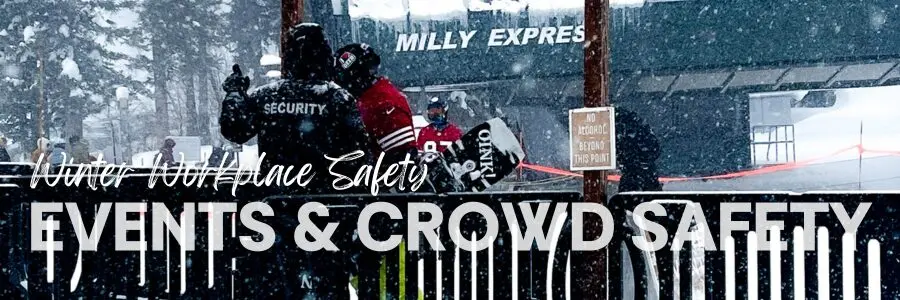
Events and Crowd Safety
Concerts, festivals, and the like slow down during the winter months, but winter events still abound! Ski resorts, for example, host large crowds daily, as well as the occasional party or wedding. Crowd control is just as important during the colder months, so here are some things we suggest to make it as easy as possible.
- Use plastic barricades instead of metal to avoid ice burns or rips in clothing from people leaning on frozen metal barricades in crowded areas. Nobody wants raw skin, a ripped coat, or torn ski pants, so choosing an alternative material to the traditional metal bike barricade can save many an outfit or gloveless hand from harm.
- Use signage to indicate exits and first aid stations, especially for if the weather turns bad. Knowing the safest place to exit an area or the safest building to enter will keep guests safe in case of a storm.
- Ensure pedestrian walkways have proper lighting. Ones that automatically turns on when the sun goes down are particularly helpful if your event will go past dark.
- If using plastic crowd barricades, prep them for extreme weather (if expected):
- Interlock to create a strong, continuous line of barricades
- If extra reinforcing is needed, add sandbags on the feet to offer more support against wind.
- Use vibrant, custom signage to help directions to stand out in the snow.
Stay safe in the snow
Whatever your industry, winter weather adds an element (pun intended) that makes it necessary to take extra precautions to stay safe. As the snowy weather approaches, we hope you’ll choose OTW to help you keep your construction sites, roadside work zones, and awesome events as safe as they can be.
